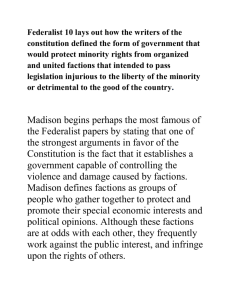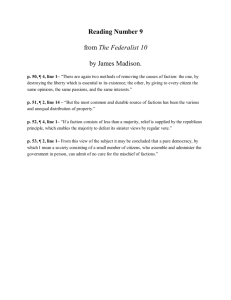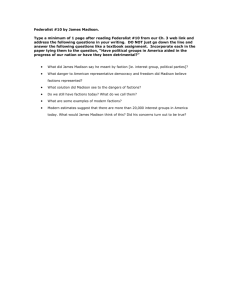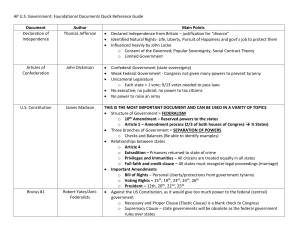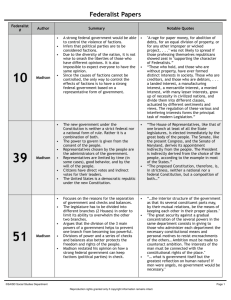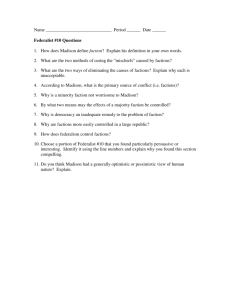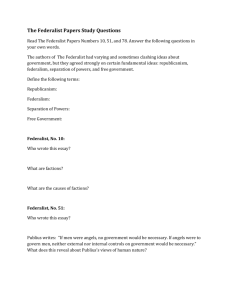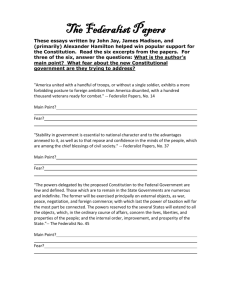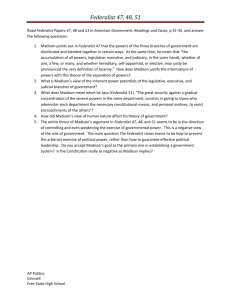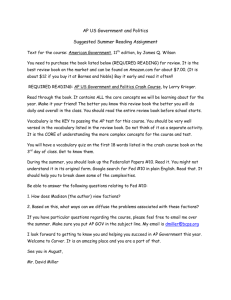federalist summary - Mr. Partridge WGHS
advertisement
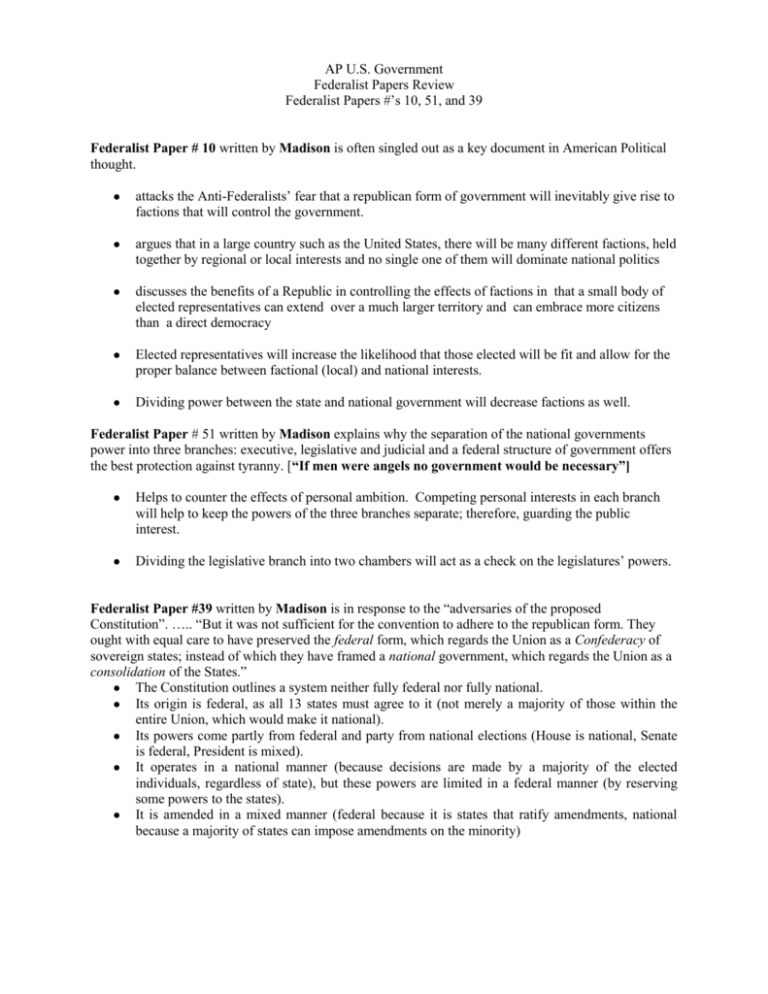
AP U.S. Government Federalist Papers Review Federalist Papers #’s 10, 51, and 39 Federalist Paper # 10 written by Madison is often singled out as a key document in American Political thought. ● attacks the Anti-Federalists’ fear that a republican form of government will inevitably give rise to factions that will control the government. ● argues that in a large country such as the United States, there will be many different factions, held together by regional or local interests and no single one of them will dominate national politics ● discusses the benefits of a Republic in controlling the effects of factions in that a small body of elected representatives can extend over a much larger territory and can embrace more citizens than a direct democracy ● Elected representatives will increase the likelihood that those elected will be fit and allow for the proper balance between factional (local) and national interests. ● Dividing power between the state and national government will decrease factions as well. Federalist Paper # 51 written by Madison explains why the separation of the national governments power into three branches: executive, legislative and judicial and a federal structure of government offers the best protection against tyranny. [“If men were angels no government would be necessary”] ● Helps to counter the effects of personal ambition. Competing personal interests in each branch will help to keep the powers of the three branches separate; therefore, guarding the public interest. ● Dividing the legislative branch into two chambers will act as a check on the legislatures’ powers. Federalist Paper #39 written by Madison is in response to the “adversaries of the proposed Constitution”. ….. “But it was not sufficient for the convention to adhere to the republican form. They ought with equal care to have preserved the federal form, which regards the Union as a Confederacy of sovereign states; instead of which they have framed a national government, which regards the Union as a consolidation of the States.” ● The Constitution outlines a system neither fully federal nor fully national. ● Its origin is federal, as all 13 states must agree to it (not merely a majority of those within the entire Union, which would make it national). ● Its powers come partly from federal and party from national elections (House is national, Senate is federal, President is mixed). ● It operates in a national manner (because decisions are made by a majority of the elected individuals, regardless of state), but these powers are limited in a federal manner (by reserving some powers to the states). ● It is amended in a mixed manner (federal because it is states that ratify amendments, national because a majority of states can impose amendments on the minority)

